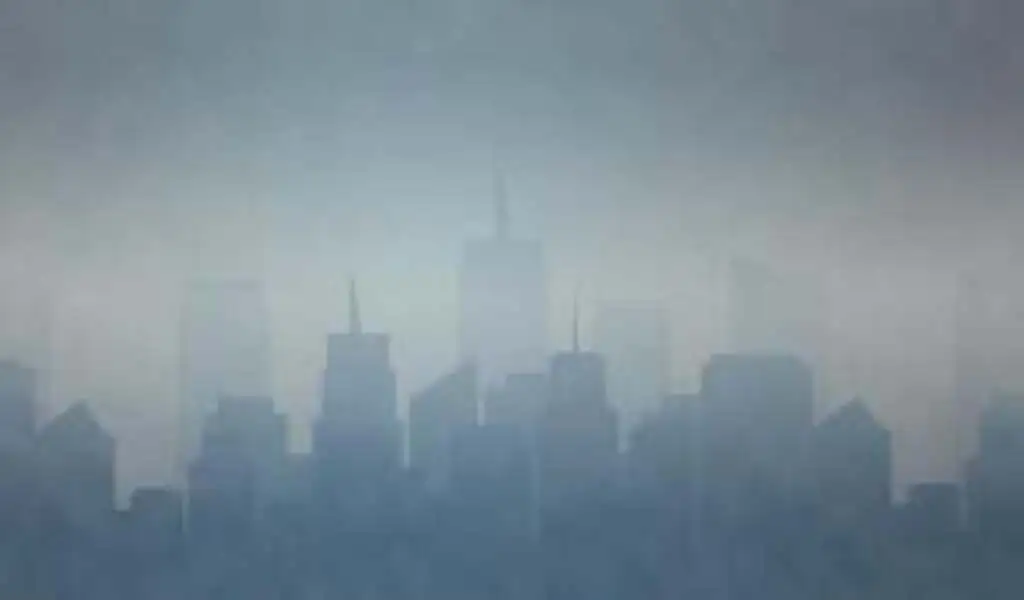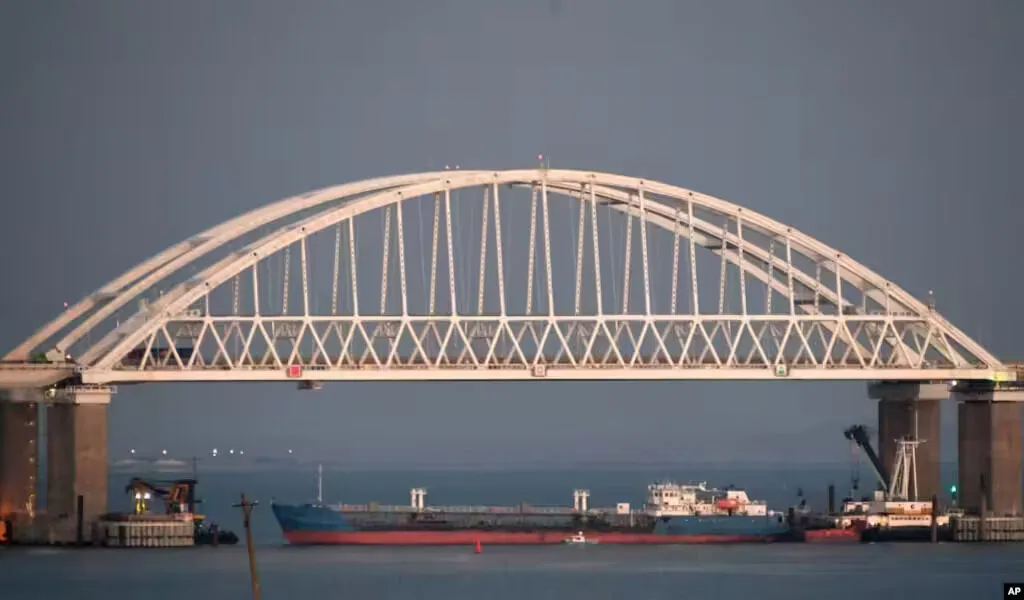World
No More Cute Snaps Of Mt Fuji. A Screen Is Up In A Japanese Town To Prevent Tourist Crowds

TOKYO Mt Fuji — I’m Sorry, but the screen is now up, so there will be no more lovely images of Mount Fuji from a popular sidewalk area in Fujikawaguchiko, Japan.
Known for having some of the best views of the famed Japanese mountain, the town began building a giant black screen over a length of street to obstruct the view and dissuade tourists from crowding the area.
A popular photo spot was outside a Lawson convenience shop, where a shot taken from a specific perspective made it appear that Mt. Fuji was resting on the store’s roof.
Mt Fuji | AP News Image
No More Cute Snaps Of Mt Fuji. A Screen Is Up In A Japanese Town To Prevent Tourist Crowds
The tourists, usually foreigners, dubbed the location “Mt. Fuji Lawson.”
However, according to officials, the villagers were dissatisfied because visitors would obstruct the tiny sidewalk, take photos on the busy road, or stroll into neighbors’ yards in search of their shot.
The erection of the 2.5 meter (8.2 foot) high black mesh net, which stretches 20 meters (66 feet) along the sidewalk, was completed Tuesday.
Still, there are other locations where travelers might discover a perfect photo opportunity.
The Yamanashi prefecture, which also includes the Yoshida Trail, the most popular of the four ways to top the 3,776-meter (12,300-foot) high mountain, has implemented a booking system ahead of this year’s Fuji climbing season to alleviate overcrowding, littering, and safety issues.
According to the new proposal, only 4,000 climbers will be permitted to enter the trail per day for a hiking charge of 2,000 yen (about $18), with the option of paying an additional 1,000 yen (about $9) for conservation during the climbing season, which begins July 1 and ends September 10.
Mt Fuji | AP News Image
No More Cute Snaps Of Mt Fuji. A Screen Is Up In A Japanese Town To Prevent Tourist Crowds
Only those who have reserved an overnight stay at one of the trail’s huts are permitted to go past the fifth of the ten stations between 4 p.m. and 3 a.m., a provision intended to prevent “bullet climbing,” or speeding to the summit without proper rest, which officials claim endangers life.
Mt. Fuji, designated a UNESCO World Cultural Heritage site in 2013, was once a pilgrimage destination.
Today, hikers go to the summit to see the sunrise. However, the massive amount of waste left behind, which includes plastic bottles, food, and even clothing, has become a serious worry.
Mt Fuji | AP News Image
No More Cute Snaps Of Mt Fuji. A Screen Is Up In A Japanese Town To Prevent Tourist Crowds
According to the Japan National Tourism Organization, Japan received more than 25 million visitors this year, and the figure is predicted to exceed roughly 32 million in 2024, breaking the previous record set in 2019.
SOURCE – (AP)
World
Do Microplastics in the Atmosphere Endanger Your Fertility?

(VOR News) – It is quite possible that the presence of small microplastic particles in the air may be a contributing factor to a wide variety of health problems, including malignancies of the lungs and colon.
This is something that needs additional research to be determined. There is one more item to take into consideration, and that is the potential that this is the exact circumstance.
A recent study found that tires and debris that are decomposing shed minute fragments of plastic that go airborne, so creating a form of air pollution that is not particularly widely known. This type of pollution is caused by the degradation of plastic. An example of this type of pollution is that which is discharged into the atmosphere.
The industry refers to microplastic as “air pollution.”
According to the findings of a researcher named Tracey Woodruff, who is a professor of obstetrics, gynaecology, and reproductive sciences at the University of California, San Francisco, “These microplastics are basically particulate matter from air pollution,” and it is common knowledge that this particular type of air pollution is particularly hazardous.
The researchers who supplied background notes stated that the size of microplastics is less than 5 millimetres, which is smaller than a grain of rice.
This information was provided, according to researchers. These details were supplied by the researchers who conducted the study. These particulars were provided by researchers who were responsible for carrying out the study.
The amount of plastic that is created on a yearly basis by enterprises all over the world is roughly 460 million tonnes, as indicated by the data that were provided by academics all over the world. The forecasts indicate that by the year 2050, this quantity is anticipated to have increased to 1.1 billion tonnes.
Driving is a substantial contributor to the amount of plastic that is floating around in the atmosphere, according to the conclusions of the experts who conducted the study about the phenomenon. When tires are worn down to the point where they scrape against the surface of the road, they allow microplastics to be released into the environment.
As a result of the tires wearing down, this occurs. This impact is brought about as a consequence of the inevitable amount of wear and tear that tires are subjected to.
A study that was published on December 18 in the journal Environmental Science & Technology was the result of researchers conducting an examination of data collected from over 3,000 previous investigations.
The paper was published as a consequence of this procedure. The review was constructed with the help of this analysis that was carried out.
Microplastic used this analysis to put together the review.
A number of diseases, such as cancer, lung problems, and infertility, may be influenced by the presence of microplastics in the air, according to the data, which led to the conclusion that this may be the case.
Despite the fact that the vast majority of the studies that were incorporated into the study were carried out on animals, the researchers claimed that it is very certainly plausible that the findings can also be applied to people. The fact that the majority of investigations were conducted on animals does not change the reality that this is the case.
“We urge regulatory agencies and policy leaders to consider the growing evidence of health harms from microplastics, including colon and lung cancer,” stated Nicholas Chartres, the principal investigator and senior research fellow at the University of Sydney.
The organisation reported this comment. The University of California, San Francisco (UCSF) issued a press release on behalf of the organisation that contained this statement. The news release was disseminated to the public. We are convinced that state officials will act quickly to make sure that no leaks of this kind occur, which is of the highest importance.
SOURCE: USN
SEE ALSO:
Justin Trudeau’s Fight for Gender Equity in Canada
Liberal MPs Call on Trudeau to Resign
World
Russian Oil Ships In The Kerch Strait Are Undergoing Rescue Operations.

(VOR News) – Following Sunday’s powerful storm, a Russian oil tanker carrying hundreds of tonnes of oil products ultimately broke apart, causing an oil spill into the Kerch Strait below. Additionally, Russian officials reported that the damage was causing problems for another vessel.
Sunday, Russian authorities announced an emergency rescue operation.
According to the Russian state news agency TASS, which claimed the Emergency Situations Ministry as its source, the Volgoneft-212 tanker, carrying fuel oil and carrying thirteen crew members, ran aground and suffered damage to its bow. A shipment of fuel oil was being transported by the tanker.
Authorities have told the public that the damage was brought on by the extreme weather conditions that are currently occurring.
A second tanker, the Volgoneft-239, was damaged during the storm and is currently stranded in the same area with 14 crew members on board, according to the Ministry of Emergency Situations. The tanker was discovered abandoned and alone in the same spot.
Additional tankers also suffered damage. The 132-meter-long cruiser, which was constructed in 1973, hangs the Russian flag around its neck.
The footage posted by state media showed the 136-meter Volgoneft-212 tanker, which was cut in two with its bow underwater, and waves crashing over its deck. At least one person lost his life as a result of this tragedy. This led to the opening of two distinct criminal investigations by the Russian authorities to look into potential violations of certain safety regulations.
Having flown the Russian flag since 1969, the yacht was finished.
Rosmorrechflot, the Russian government agency in charge of water transportation, reported a petroleum product spill.
It is believed that the cargo capacity of each tanker is around 4,200 tonnes of oil products.
The magnitude of the leak and the cause of the substantial damage one of the tankers received were not specified in the official remarks. This is in accordance with the official remarks.
Several news sites cited Kremlin spokesperson Dmitry Peskov as saying that President Vladimir Putin directed the formation of a working committee to handle the rescue effort and lessen the effects of the oil disaster.
Peskov recommended that the government appoint the working committee’s members. This comment was made public right after Putin met with the ministries responsible for ecology and disaster management.
The Russian government has said that it will be sending more than fifty individuals and pieces of equipment to the area in response to the current crisis. Mi-8 helicopters and rescue tugboats are examples of these people and tools.
The news that experts are presently investigating the damage at the event site was announced by Svetlana Radionova, who is in charge of Rosprirodnadzor, Russia’s natural resources regulating entity.
Kommersant reports that Volgoneft-212 used 4,300 tonnes of fuel oil.
The footage, which showed a partially submerged ship and murky water on rough seas, was posted to Telegram without the owner’s consent.
The warships were located in the Kerch Strait, which separates Crimea from the Russian mainland, when the distress signals were sent out.
The Kerch Strait is a crucial international marine passage that connects the Black Sea with the Sea of Azov, allowing for easier traffic between the two bodies of water. It also acts as a border between Russia and the Crimean Peninsula, which is under Russian occupation. The Kerch Strait is located in the centre of the two nations.
The peninsula has remained a major source of contention between the two national governments ever since Russia annexed it from Ukraine in 2014. Russia was the one who seized the peninsula. Ukraine brought legal action against Russia before the Permanent Court of Arbitration in 2016.
Specifically, the lawsuit claimed that Russia intended to illegally take over a location. The argument was supported by evidence pertaining to Russia’s conduct in the region. In 2021, the Russian Federation closed the strait for several consecutive months
SOURCE: VN
SEE ALSO:
Indian Students Studying in Canada Fret Over Visa Scrutiny
Trudeau Sparks Anger After Labeling Trump Voters “Misogynists”
World
Japan List Cannabis as Narcotic Criminalizes Recreational Use

TOKYO – Japan updated its cannabis and narcotics control legislation on Thursday, criminalizing cannabis (Marijuana) use and tetrahydrocannabinol (THC), imposing a maximum seven-year prison sentence.
While the possession, transmission, and cultivation of cannabis and THC were already prohibited in Japan, the new rules will classify them as narcotics and criminalize their use as well, with a prison sentence of up to seven years for violations.
The amended regulations also legalize medical items containing cannabis-derived compounds that are beneficial and safe.
In 2019, 1.8 percent of the Japanese population had used cannabis at least once, making it the country’s second most popular illicit substance behind methamphetamine.
In 2023, a record 6,703 people were probed in cannabis-related criminal cases in Japan, topping methamphetamine cases for the first time, according to the Health, Labour, and Welfare Ministry. Seventy percent of instances involved people under the age of thirty.
A nationwide poll performed the same year by the ministry’s research group estimated that approximately 200,000 people had consumed marijuana within the previous year.
Japan previously did not penalize cannabis usage, apparently taking into account farmers who may have accidentally ingested the drug while producing cannabis plants for use in hemp products.
The amendments will also lift a restriction on cannabis-derived medicines, putting them under a licensing system similar to other drugs used for pain relief and other purposes.
Drugs derived from cannabis plants were only allowed in clinical studies in Japan, but patient groups have been advocating for access to cannabis-derived cannabidiol treatments already licensed in Europe and the United States for illnesses like severe epilepsy.
Cannabis cultivation dates back to the Jōmon period of Japanese prehistory, roughly six to ten thousand years ago (source: Wikipedia).
Cannabis hemp, as one of Japan’s first cultivated plants, provided an essential supply of plant fibre for clothing, cordage, and Shinto ritual goods, among other uses.
For much of Japanese history, hemp was common for fabric and food before cotton emerged as the country’s dominant fibre crop during industrialization during the Meiji period.
Following the end of World War II and the occupation of Japan, the Cannabis Control Law prohibited cannabis possession and manufacturing.
Related News:
Japan’s Mount Fuji Implements Tourist Tax In Response To Overcrowding Concerns
Germans Celebrate As Recreational Cannabis Use Becomes Legal
-
Politics4 weeks ago
Miller Expects 4.9 Million Foreigners to Leave Canada Voluntarily
-
News3 weeks ago
Nolinor Boeing 737 Crash Lands in Montreal
-
News2 weeks ago
“Shocking Video” Vancouver Police Shoot Armed Suspect 10 Times
-
Tech3 weeks ago
Increasing its Stake in OpenAI by $1.5 Billion is a Possibility for SoftBank.
-
News4 weeks ago
Facebook Securities Fraud Case Dropped
-
Health4 weeks ago
A Canadian Teenager’s Bird Flu Virus Has Mutations






















